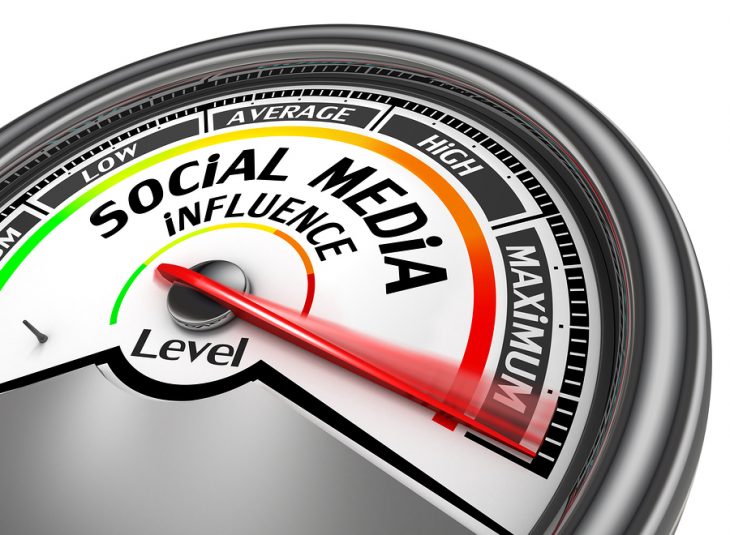
THE LAST YEAR HAS BEEN transformative for influencer marketing, with new companies popping up, countless conferences, and everyone with a smartphone trying to become the next YouTube star.
Although social content creators are not a new thing, the money entering the space has made it a very real business. Brands like Revlon and Adidas have been making a lot of noise on the influencer stage, investing in these personalities with splashy campaigns. And there is data to validate their efforts: As far back as 2015, studies were showing that digital celebs were more influential among teenage audiences than mainstream celebs.
In a recent survey, eMarketer found that 71% of advertisers planned to increase or maintain current spending levels on influencers, in 2017. It’s a phenomenon every media professional should be paying attention to.
What is influencer marketing?
It’s difficult to come up with one homogenous definition, mostly because so many different companies refer to influencers in different ways. Terms like content creator, blogger, vlogger, and ambassador all essentially refer to the same thing.
From an industry perspective, influencer marketing tends to have the following characteristics:
- It uses people with a certain level of notoriety on a subject matter (i.e. food) or a demographic group (i.e. moms) to spread a brand message.
- These people are creating content on a major social platform, like YouTube, Instagram, Snapchat, or Twitter.
- They have a large social media following, relative to the population they’re reaching. For example, a general lifestyle creator might have 500K social media subscribers, whereas someone in the medical space might have a social following of only 1,000, but those followers are all doctors.
- Influencers have both creative and distribution bundled together.
That last point explains why influencer marketing has taken off in the last few years. Prior to social media, how could a person have had the distribution of 500K subscribers, without a media co backing them up? Audience acquisition is no longer a barrier.
But hasn’t social media been around for years?
Yes, social media is not at all new, but brands investing in creators at scale, to market their products is a recent phenomena. And I would argue that we’re in the very early days.
By some estimates, the influencer market today is worth $2-$3 billion. Considering how much time is spent consuming the content, these ad dollars are a drop in the bucket.
Celebrities have been pitching products for decades – how is this different?
One could say that influencer marketing has been around ever since celebrity spokespeople began pushing products on radio. But I would disagree. Influencer marketing really only began when social media distribution kicked in, because the selling dynamic shifted from media companies to individuals. Deals are done every day between major brands and influencers on social media.
Influicity regularly processes transactions between global brands and influencers, ranging from a few thousand dollars up to 6-figures. And we have been doing this since 2012, (although the scale has catapulted in the last 12 months).
As long as there are social platforms capturing the attention of media consumers, the influencers’ footprint will continue to rise.
Who are these influencers?
Personalities like Lilly Singh (aka iiSuperwomanii) and Hannah Hart tend to grab the headlines, but in reality there are thousands of influencers creating content that’s watched by the millions.
The most successful ones have a real understanding of format, narrative, and programming principles. Don’t confuse low cost production with low quality content. It’s amazing what can be done with an iPhone camera and a lamp from Ikea.
How is the industry reacting?
Advertisers and their agencies certainly moved fast throughout 2016. One large CPG brand, who runs their influencer operations on Influicity, shifted a sizeable portion of their glossy print budget over to influencers last year. And they’ve been continuing that shift in 2017.
Media companies like Bell Media have invested heavily (and, full discosure, is working closely with Influicity) and seen success as ever more ad programs include an influencer component. As more businesses carve out a line item in their marketing plans titled “influencers”, the industry must rally together to define its future.
I suspect many companies will be investing in the structure and strategy around influencers. One thing is clear: it’s  not going to be one-size-fits-all.
not going to be one-size-fits-all.
Jonathan Davids, pictured, is founder and CEO of Influicity @jonathandavids. Founded in 2012, Influicity is a platform for businesses to manage and scale their influencer operations. The suite of products includes influencer search, insights & analytics, campaign management, reporting, social listening, and more. The company has offices in Toronto and LA.



